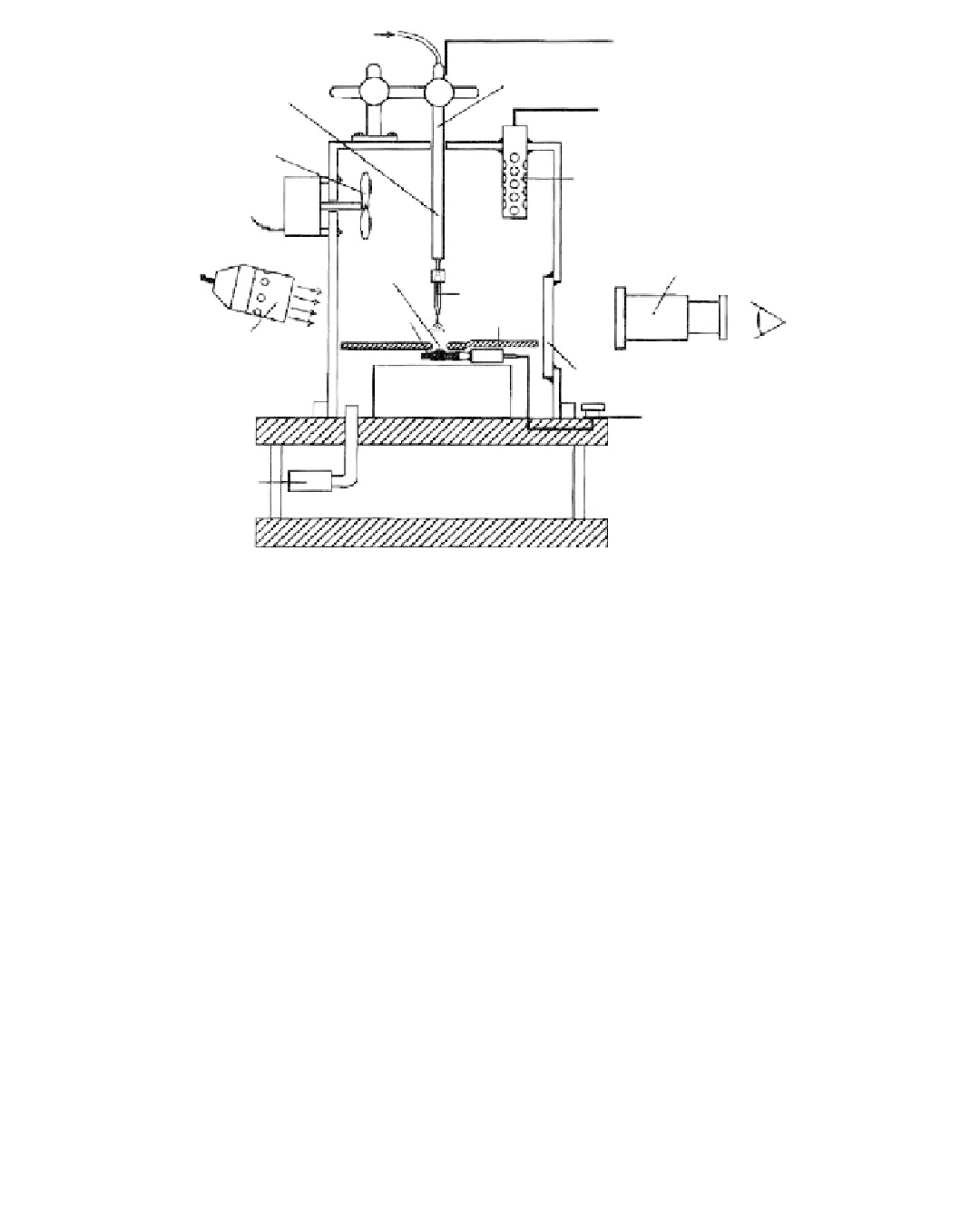Biomedical Engineering Reference
In-Depth Information
Solution
To high-voltage
power supply
Capillary
holder
Capillary
holder
Fan
Humidity
sensor
Protein
deposit
Microscope
Capillary
Screen
Quartz
crystal
Light source
Glass
window
To high-voltage
power supply
Gas inlet
FIGURE 11.28
A schematic diagram of the setup to deposit protein by electrospraying. (Reprinted from
Morozov, V.N. and Morozova, T.Y.,
Anal. Chem.
, 71, 1415, 1999. © American Chemical Society. With
permission.)
Uematsu et al. prepared α-lactalbumin (α-LA) protein fi lms from aqueous solutions of α-LA
at different concentrations using electrospraying [78]. α-LA is present in mammalian milk and
functions as a specifi c modifi er of the enzyme galactosyltransferase. The schematic diagram of
the setup is shown in Figure 11.29. The biological activities of the cross-linked α-LA protein fi lms
prepared by electrospraying were tested by the mechanochemical method. Figure 11.30 shows the
microstructures of the α-LA fi lms prepared through electrospraying with different initial concentra-
tions. The response to Ca
2+
ion demonstrated that the biological activity of the fi lms was preserved.
The postdeposition cross-linking enabled the fabrication of freestanding α-LA protein fi lms that
were insoluble in water, which could open a new direction in the application of protein-based bio-
materials. The results of the experiment demonstrated that the electrospraying technique is poten-
tially useful for the fabrication of porous and dense protein thin fi lms with biological activities.
Lee et al. [79] successfully electrosprayed transparent iron-free cytochrome
c
(Cyt
c
) protein
fi lm in which the heme was covalently linked with apo-protein matrix. The photochemically active
Cyt
c
protein fi lm can be cross-linked covalently through the proto-porphyrin IX and iron-free
Cyt
c
. The electrospraying instrument is schematically illustrated in Figure 11.31. A glass capillary
with internal platinum electrode of 50 μm in diameter was used as a nozzle for electrospraying. To
control the humidity and the environment air, the instrument was installed in a chamber. Iron-free Cyt
c
desalted with PD-10 column to reduce their electrical conductivity was electrosprayed on an ITO-glass
substrate and then cross-linked with the vapor of 70% glutaraldehyde aqueous solution. The prepared
protein fi lms still preserved the functional properties of the molecules from damage upon electro-
spraying and found higher thermal stability of the burned holes of the proto-porphyrin IX (PPIX) in

